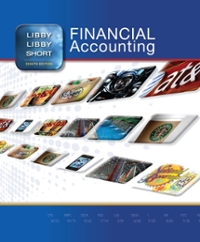Question
TEST I: Multiple Choice 40 points 1. How may the following be used in calculating the break-even point in units? Fixed Costs CM per unit
TEST I: Multiple Choice 40 points 1. How may the following be used in calculating the break-even point in units? Fixed Costs CM per unit Fixed Cost CM per unit a. Denominator Numerator c. Numerator Not used b. Denominator Not used d. Numerator Denominator
2. The peso amount of sales needed to attain a desired profit is calculated by dividing the contribution margin ratio into a. Fixed cost c. Desired profit plus fixed cost b. Desired profit d. Desired profit less fixed cost
3. At break-even point, fixed cost is always a. Less than the contribution margin c. More than the contribution margin b. Equal to the contribution margin d. More than the variable costs
4. The method of cost accounting that lends itself to break-even analysis is a. Variable c. Absolute b. Standard d. Absorption
5. Each of the following would affect the break-even point, except a change in the a. Number of units sold c. Total fixed costs b. Variable cost per unit d. Sales price per unit
6. To obtain the break-even point stated in terms of pesos of sales, total fixed costs are divided by which of the following? a. Variable cost per unit b. (Sales price per unit - variable cost per unit) sales price per unit c. Fixed cost per unit d. Variable cost per unit sales price per unit
7. Margin of safety reveals the amount by which sales could decrease before losses occur is computed by a. Subtracting variable costs from sales b. Adding variable costs and fixed costs c. Subtracting break-even sales from actual sales d. Adding contribution margin and fixed costs
8. In a sales mix break-even problem. Total fixed costs divided by the package contribution margin is to arrive at the a. Total units to break-even b. Units to break-even for a particular product in the mix c. Total break-even sales pesos d. Composite break-even point in units
9. Margin of safety ratio is computed by dividing excess of actual or budgeted sales from break-even sales or it can be determined by a. Dividing contribution margin ratio by variable cost ratio b. Dividing profit ratio by contribution margin ratio c. Dividing contribution margin ratio by profit ratio d. Dividing variable cost ratio by contribution margin ratio
10. What is the product contribution margin? a. Sales minus all variable costs b. Sales minus variable cost of goods sold c. Sales minus all fixed costs. d. Sales minus fixed manufacturing overhead.
11. Variable costs a. Are constant per unit c. Decrease per unit as volume decrease b. Vary per unit d. Remain constant in total 12. Contribution margin is equal to a. Revenue minus variable costs b. Fixed costs plus profit before tax c. Contribution margin per unit multiplied by the number of unit sold d. All of the above
13. The direct or variable costing method includes in inventory a. Direct material cost, direct labor cost, but not all factory overhead cost b. Direct material cost, direct labor cost, and variable factory overhead cost c. Prime cost but not conversion cost d. Prime cost and all conversion cost
14. When using a direct costing system, the contribution margin discloses the excess of a. Revenues over fixed costs b. Projected revenues over break-even point c. Revenues over variable costs d. Variable costs over fixed costs
15. Which of the following cost accounting terminology is commonly referred to a direct costing? a. Absorption costing c. Variable costing b. Price costing d. Relevant costing
16. In an income statement prepared as an integral report using the direct costing method, fixed selling and administrative expense would a. Not be used b. Be used in the computation of the contribution margin c. Be used in the computation of operating income d. Be treated the same as variable selling and administrative expenses
17. The full (absorption) costing method includes in inventory Fixed Factory Variable Factory Overhead Overhead a. No No b. No Yes c. Yes Yes d. Yes No 18. In an income statement prepared as an integral report using the variable costing method, variable selling and administrative expenses would a. Not be used b. Be used in the computation of the contribution margin c. Be used in the computation of the operating income but not in the computation of contribution margin d. Be treated the same as fixed selling and administrative expenses.
19. Full (Absorption) costing is required a. For financial accounting purposes b. For financial accounting and tax purposes c. For financial and managerial accounting purposes d. For managerial accounting purposes
20. Variable (Direct) costing is not acceptable for a. Managerial accounting b. Financial accounting c. Transfer pricing d. Costing product for internal purposes
Step by Step Solution
There are 3 Steps involved in it
Step: 1

Get Instant Access to Expert-Tailored Solutions
See step-by-step solutions with expert insights and AI powered tools for academic success
Step: 2

Step: 3

Ace Your Homework with AI
Get the answers you need in no time with our AI-driven, step-by-step assistance
Get Started


